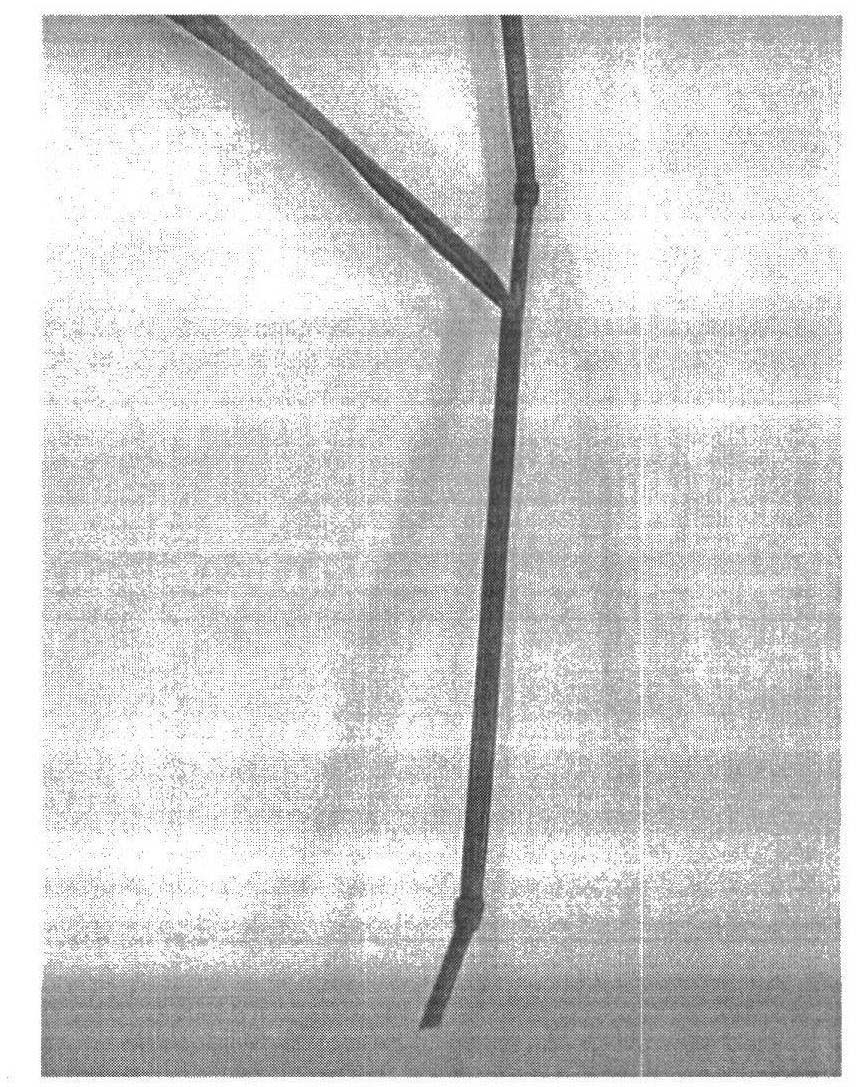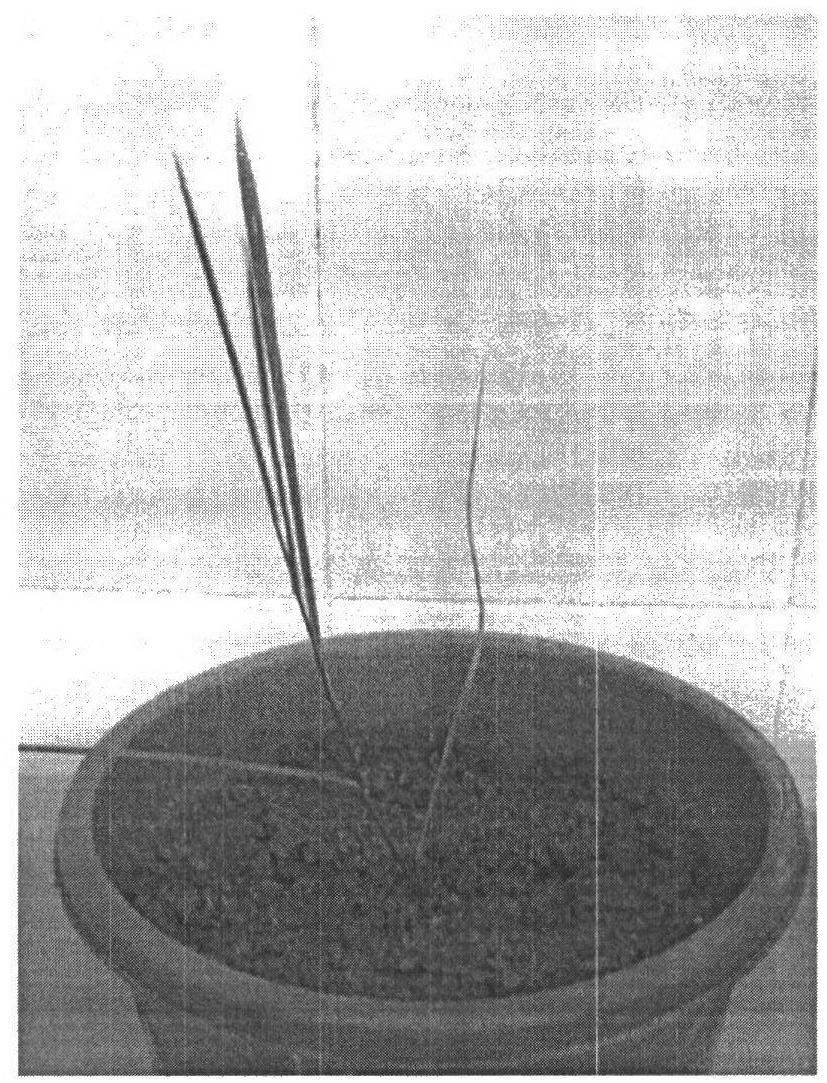Rapid propagation method for Leersia hexandra Swartz
A node and naphthalene acetic acid technology, applied in the field of chromium-contaminated phytoremediation, can solve the problems of not being able to meet large-scale engineering repairs, difficulty in distinguishing individual seedlings, and low seed germination rate, achieving no seasonal influence, shortening the growth cycle, The effect of quick process
- Summary
- Abstract
- Description
- Claims
- Application Information
AI Technical Summary
Problems solved by technology
Method used
Image
Examples
Embodiment
[0012] Choose 50 vigorously growing Lishihe plants with multiple nodes, at the second node, cut the Lishihe stem tip, and keep 1.0-1.5cm stem section at the end of the node (such as figure 1 shown). The blade destroys the epidermis of the nodes along the periphery, exposing the cambium; the terminal nodes of Lishihe are immersed in 5 mg / L naphthalene acetic acid solution and placed in a dark artificial climate box. After 6 hours, the naphthalene acetic acid solution at the end of Lishihe is cleaned with distilled water Clean, 10 plants are packaged in a group of improved hoagland nutrient solution for cultivation, and the cultivation environment is set as follows: light intensity 2000LX, relative humidity 75%, daytime 15h / d, temperature 25±1℃, nighttime 9h / d, temperature 20±1 ℃. Such as figure 2 As shown, after cultivating for 7 days, the nodes will take root and grow seedlings. The rooted Lishihe is transplanted into the soil and cultivated in a natural environment, and w...
PUM
 Login to View More
Login to View More Abstract
Description
Claims
Application Information
 Login to View More
Login to View More - R&D
- Intellectual Property
- Life Sciences
- Materials
- Tech Scout
- Unparalleled Data Quality
- Higher Quality Content
- 60% Fewer Hallucinations
Browse by: Latest US Patents, China's latest patents, Technical Efficacy Thesaurus, Application Domain, Technology Topic, Popular Technical Reports.
© 2025 PatSnap. All rights reserved.Legal|Privacy policy|Modern Slavery Act Transparency Statement|Sitemap|About US| Contact US: help@patsnap.com



